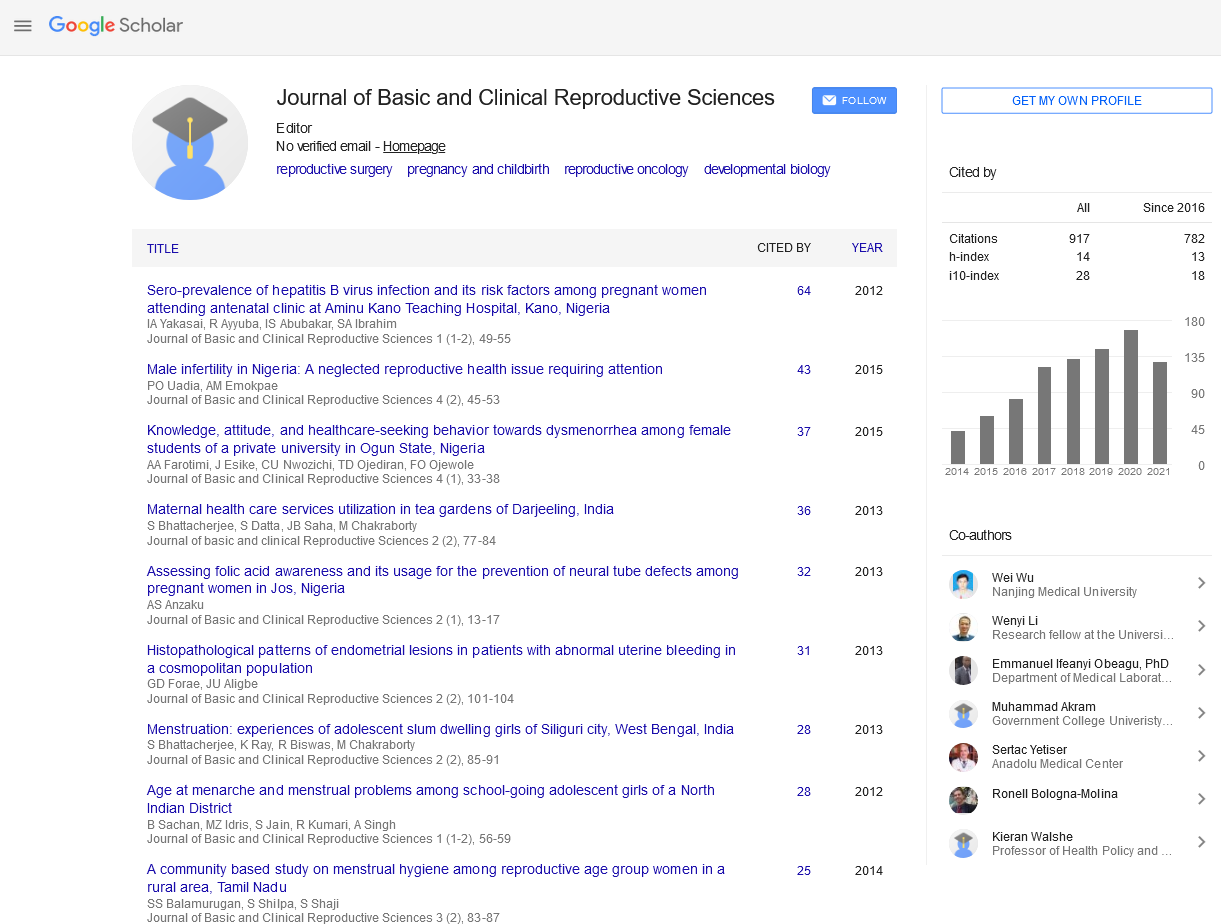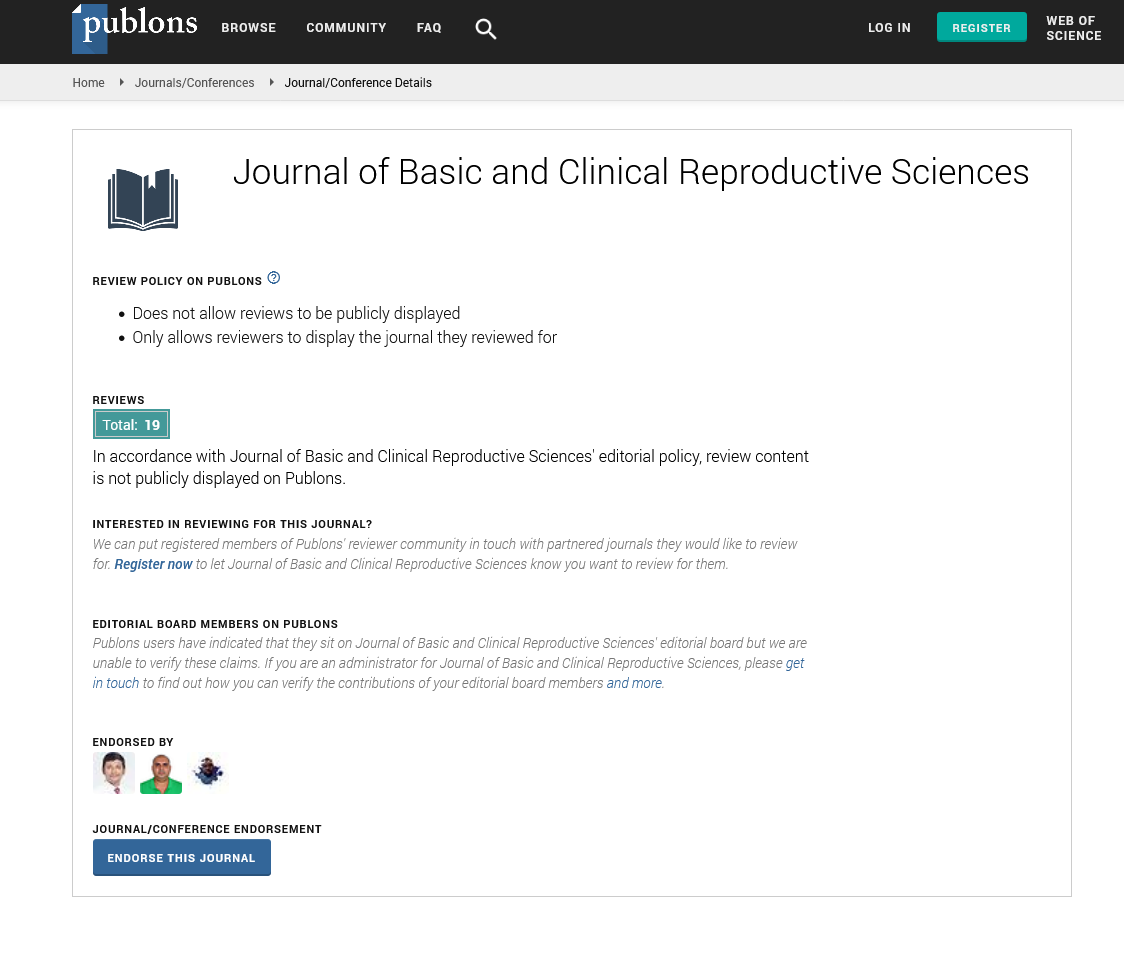Opinion - Journal of Basic and Clinical Reproductive Sciences (2023) Volume 12, Issue 5
Bioethical Considerations in the Implementation of Novel Birth Control Strategies
Received: 25-Sep-2023, Manuscript No. JBCRS-23-121563; Editor assigned: 27-Sep-2023, Pre QC No. JBCRS-23-121563 (PQ); Reviewed: 11-Oct-2023 QC No. JBCRS-23-121563; Revised: 18-Oct-2023, Manuscript No. JBCRS-23-121563 (R); Published: 25-Oct-2023
This open-access article is distributed under the terms of the Creative Commons Attribution Non-Commercial License (CC BY-NC) (http://creativecommons.org/licenses/by-nc/4.0/), which permits reuse, distribution and reproduction of the article, provided that the original work is properly cited and the reuse is restricted to noncommercial purposes. For commercial reuse, contact reprints@pulsus.com
Description
The quest for effective and reliable birth control strategies has been a constant thread in the fabric of human history. From ancient herbal concoctions to cutting-edge technological innovations, the evolution of birth control methods reflects not only scientific progress but also societal attitudes towards family planning. Understanding the historical context of birth control strategies is crucial for appreciating their evolution. Ancient civilizations grappled with fertility control using methods rooted in tradition and often based on limited scientific understanding.
Contemporary methods
In the modern era, an array of birth control methods offers individuals and couples diverse options for family planning. From hormonal contraceptives to barrier methods, Intra Uterine Devices (IUDs), and permanent sterilization, this section provides a comprehensive overview of the available strategies. Each method is scrutinized for its efficacy, ease of use, and potential side effects, empowering individuals to make informed choices tailored to their unique circumstances. IUDs operate on diverse mechanisms to prevent pregnancy, depending on the type. Hormonal IUDs release progestin, thickening cervical mucus and inhibiting sperm mobility, while copper IUDs produce an environment toxic to sperm. IUDs boast impressive efficacy rates, rivalling sterilization as one of the most reliable contraceptive methods.
Advancements in technology
Technological advancements have revolutionized the landscape of birth control. This section explores how innovations such as Long-Acting Reversible Contraceptives (LARCs), mobile applications for fertility tracking, and gene-editing technologies are reshaping the field. The intersection of technology and reproductive health opens new possibilities, addressing not only the prevention of pregnancies but also individualized approaches to fertility management. While birth control primarily serves to prevent unwanted pregnancies, its impact extends beyond family planning. This section examines how birth control influences reproductive health, including its role in regulating menstrual cycles, alleviating symptoms of conditions like endometriosis, and mitigating the risk of certain cancers. Access to birth control is a critical aspect of reproductive health, yet disparities persist globally. This section examines the challenges associated with unequal access to birth control, exploring socio-economic, cultural, and geographical factors that contribute to these disparities. By acknowledging these challenges, we can work towards developing strategies that promote equitable access to reproductive healthcare worldwide. Birth control is not only a biological process but also a deeply cultural and ethical one. This section delves into the cultural and ethical dimensions of birth control, addressing how societal norms and values influence its acceptance and utilization. Understanding these dynamics is essential for developing strategies that respect diverse perspectives while ensuring reproductive autonomy. A key component of effective birth control strategies is education. This section emphasizes the importance of comprehensive sexual education in empowering individuals to make informed decisions about their reproductive health. By fostering a culture of open dialogue and knowledge- sharing, societies can break down stigmas, dispel myths, and promote responsible and informed contraceptive choices. Despite significant progress, challenges persist in the realm of birth control strategies. This section examines ongoing issues such as contraceptive method discontinuation, the need for male contraceptive options, and the evolving landscape of reproductive rights. Additionally, it explores future directions, highlighting areas of research and development that hold promise for more effective, accessible, and inclusive birth control strategies.
Conclusion
In conclusion, the landscape of birth control strategies is dynamic and multifaceted, shaped by historical legacies, technological innovations, and cultural dynamics. This essay has traversed the historical evolution, contemporary applications, technological advancements, global perspectives, cultural considerations, and the challenges and opportunities that define the field of birth control. By understanding this complex tapestry, we can contribute to the ongoing discourse on reproductive health, fostering a future where individuals can navigate their fertility with informed choices and empowered autonomy.


